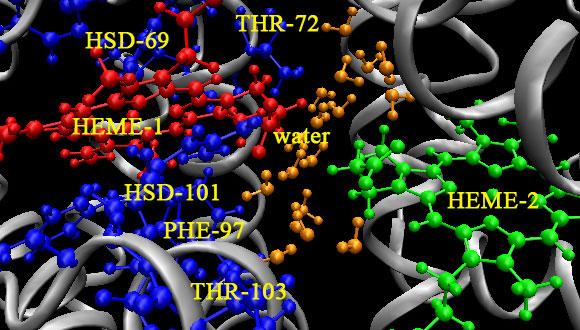Chemical Physics Seminar: Liquid and Solid State NMR Investigations of Electrolytes for Beyond Lithium Ion Applications
Prof. Steve G. Greenbaum, Hunter College of CUNY, NY
Abstract:
Nuclear magnetic resonance (NMR) has been productively employed to investigate ion transport and solvation in standard carbonate-based Li ion battery electrolytes and in solid polymer electrolytes based on poly(ethylene oxide) (PEO). Future electrochemical power sources require new electrolytes to adapt to disruptive changes in the basic working chemistry, such as moving from Li ion to Na ion, or to Li metal electrodes. We highlight three recent collaborative activities on electrolytes in our group (i) glyme-based electrolytes for Li-S batteries; (ii) Na ion; (ii) Li metal polymer.
A series of Li electrolytes made with glymes of variable length (mono, di, tri, tetra, and higher) has been synthesized by collaborators (Jusef Hassoun, Lorenzo Carbone) at the University of Ferrara, Italy. Natural abundance 17O NMR is found to be an exquisitely sensitive probe of the total charge on the solvent as well as anion oxygens, and thus provides useful information on solvent-ion and ion-ion association. Though these electrolytes show promise for use in Li metal and Li-S batteries, NMR measurements reveal a significant degree of ion association. Results are also presented for the corresponding Na electrolytes.
Using a combination of 23Na, 19F and natural abundance 17O NMR, and pulsed field gradient diffusion in a collaboration with the U.S. Army Research Lab (Kang Xu, et.al.), we have examined NaPF6 solutions in binary solvent mixtures ethylene carbonate (EC) and ethylmethyl carbonate (EMC) for possible cation solvation preference as a function of EC/EMC ratio. Spectroscopic evidence demonstrate that the Li+ and Na+ cations share a number of similar ion–solvent and ion-ion interaction trends, such as a preference for a solvation shell rich in cyclic carbonates over linear carbonates and fluorinated carbonates. However some differences are noted, in particular a somewhat weaker ion-solvent interaction for Na+. Results for other binary solvent mixtures will be included.
Ionic Materials, Inc. (Mike Zimmerman, Randy Leising, et.al.) has invented a novel polymer with extremely high ionic conductivity over a range of temperatures, even surpassing that of a commercial porous separator containing the standard liquid carbonate-based electrolyte at room temperature. This solid polymer can be reliably extruded into very thin films, is non-flammable, has attractive mechanical properties for lithium dendrite suppression, is electrochemically stable against Li, and is compatible with a variety of different anodes and cathodes.
The polymer electrolyte is based on an inexpensive semicrystalline commercially available polymer such as polyether ether ketone or polyphenylene sulfide and Li salts familiar to the battery and polymer electrolyte communities. The ionic transport mechanism is unlike that which characterizes the PEO salt complexes – that is ion mobility is completely decoupled from polymer host motion, as verified by differential scanning calorimetry and NMR. In fact NMR pulsed gradient measurements reveal Li self-diffusion coefficients at room temperature that are an order of magnitude higher than in the ceramic ion conductors of the Li10GeP2S12 class and thus the highest in any known solid. Furthermore, the Li+ transference number determined electrochemically and by NMR is > 0.6.


